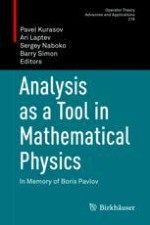Boris Pavlov (1936-2016), to whom this volume is dedicated, was a prominent specialist in analysis, operator theory, and mathematical physics. As one of the most influential members of the St. Petersburg Mathematical School, he was one of the founders of the Leningrad School of Non-self-adjoint Operators.
This volume collects research papers originating from two conferences that were organized in memory of Boris Pavlov: “Spectral Theory and Applications”, held in Stockholm, Sweden, in March 2016, and “Operator Theory, Analysis and Mathematical Physics – OTAMP2016” held at the Euler Institute in St. Petersburg, Russia, in August 2016. The volume also includes water-color paintings by Boris Pavlov, some personal photographs, as well as tributes from friends and colleagues.
